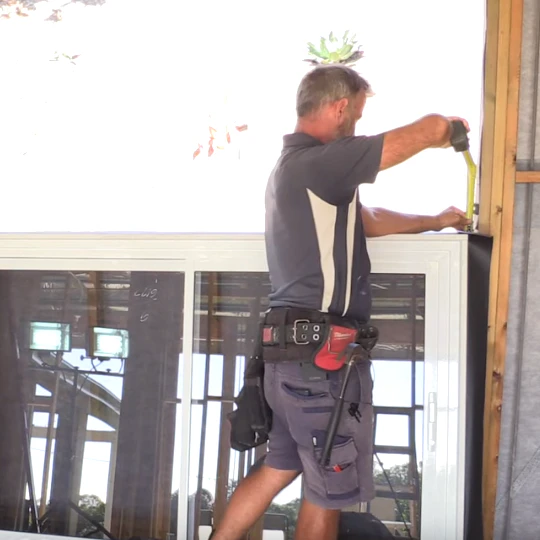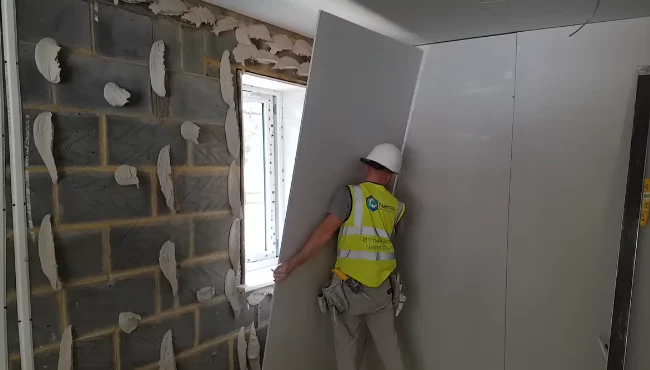What does a window fitter do?
Window fitters play a crucial role in transforming architectural designs into reality. They are responsible for installing windows, doors, conservatories, and curtain walling, ensuring they are secure, weatherproof, and comply with current building regulations. It’s worth noting that the role of a glazier, is quite similar, with a focus on the installation, maintenance and replacement of glass products, making these two professions closely related.
Required skills
Being a window fitter demands a unique set of skills. Attention to detail is key, as precision is vital when measuring and fitting windows. Physical fitness is also crucial, as the job involves lifting and handling heavy glass panels. They must understand architectural plans, work with various materials, and possess problem-solving abilities to address on-site challenges efficiently. Communication skills are also vital, as window fitters often collaborate closely with customers, architects and other construction professionals.

Qualifications
While there is no specific educational route, obtaining qualifications can significantly enhance one’s prospects in the field. Achieving NVQ Level 2 and/or NVQ Level 3 in Fenestration Installation is a key milestone for aspiring window fitters. Holding a blue CSCS card or gold CSCS card not only demonstrates competence but also opens doors to better opportunities. These qualifications ensure a comprehensive understanding of the trade, covering everything from health and safety regulations to
Benefits
Becoming a qualified window fitter comes with a range of benefits. With the right qualifications, professionals can expect increased job security, better pay, and access to more diverse projects. The blue CSCS card or gold CSCS card not only showcases competence but also highlights a commitment to high industry standards. Additionally, the potential to progress into supervisory roles or specialize in specific areas of fenestration provides a dynamic career path.
Challenges
Like any profession, fenestration installation has its challenges. Working at heights and dealing with unpredictable weather conditions can be demanding. Precision is crucial, and mistakes can be costly. However, overcoming these challenges contributes to the sense of accomplishment in this rewarding career.
Career path and progression
A window fitter’s career can evolve in various directions. Some may choose to specialize further, focusing on specific types of windows or advanced energy-efficient installations Some may choose to become self-employed or move into supervisory and managerial roles, overseeing entire installation teams. With experience, some may choose to start their own fenestration business. Continuous learning and staying updated with industry advancements are essential for career progression.
Statistics
Window fitters and glaziers in the UK* – Prognosis
Average Annual Increase
ARR**
SOURCE: CITB ” Labour Market Intelligence Report (2024 – 2028)”.
* These prognosis calculations assume constant ARR and growth rate without significant external disruptions.
** ARR – Annual Recruitment Requirement is a metric used to estimate the number of new workers needed annually to meet labour market demands in a specific industry, region, or occupation.
How much could you earn as a window fitter
Earnings for window fitters in the UK can vary based on experience and location. On average, entry-level fitters can earn around £23,000 to £28,000 per year. Experienced fitters or those in supervisory roles can earn upwards of £40,000. Self-employed window fitters may have the potential to earn even more, depending on their workload and reputation.
*Information sourced from reputable recruitment sites and agencies, reflecting the latest job market insights and trends. Figures can vary based on factors such as specific job requirements, individual qualifications, and regional economic conditions. Additionally, self-employed professionals should account for expenses such as tools, materials, insurance, and transportation when calculating their net earnings.
Typical hours per week
Standard work hours per week
(Employed)
Working hours per week with overtime
(Employed and Self-employed)
Window fitting is a full-time occupation, with typical workweeks ranging from 43 to 45 hours. However, project deadlines or specific client requirements may occasionally result in longer hours. The flexibility of working both indoors and outdoors offers variety in the work environment.
Conclusion
Becoming a fenestration installer is not just about fitting windows; it’s about contributing to the structural integrity and visual appeal of buildings. With the right skills, qualifications, and a passion for precision, this career can be both personally and professionally fulfilling. So, if you’re considering a path that combines craftsmanship, technical expertise, and job satisfaction, window fitting might just be the perfect fit for you.

